Annual cicadas of Alabama (AL):
All cicadas appear every year unless otherwise noted.
Cicadettana calliope calliope (Walker, 1850) aka Southern Grass Cicada
Cicadettana calliope floridensis (Davis, 1920)
Diceroprocta bequaerti (Davis, 1917) aka Scrub Cicada
Diceroprocta viridifascia (Walker, 1850) aka Salt Marsh Cicada
Megatibicen grossus (Fabricius, 1775) aka Northern Dusk Singing Cicada formerly Megatibicen auletes
Megatibicen figuratus (Walker, 1858) aka Fall Southeastern Dusk-singing Cicada
Megatibicen pronotalis walkeri Metcalf, 1955 aka Walker’s Cicada
Megatibicen resonans (Walker, 1850) aka Southern Resonant/Great Pine Barrens Cicada
Neocicada hieroglyphica hieroglyphica (Say, 1830) aka Hieroglyphic Cicada
Neocicada hieroglyphica johannis (Walker, 1850)
Neotibicen davisi davisi (Smith and Grossbeck, 1907) aka Davis’ Southeastern Dog-Day Cicada
Neotibicen lyricen engelhardti (Davis, 1910) aka Dark Lyric Cicada
Neotibicen pruinosus pruinosus (Say, 1825) aka Scissor(s) Grinder
Neotibicen robinsonianus Davis, 1922 aka Robinson’s Annual Cicada or Robinson’s Cicada
Neotibicen similaris apalachicola Marshall and Hill, 2017
Neotibicen similaris similaris (Smith and Grossbeck, 1907) aka Similar Dog-Day Cicada
Neotibicen tibicen australis (Davis, 1912) aka Southern Swamp Cicada
Neotibicen tibicen tibicen (Linnaeus, 1758) aka Swamp Cicada, Morning Cicada
Periodical cicadas of Alabama (AL):
Magicicada tredecassini Alexander and Moore, 1962 aka 13-Year Cicada or 13-Year Cassini
These emerge next in 2024 (Brood XIX), then 2027 (Brood XXII), then 2028 (Brood XXIII). Often they emerge 1 or 4 years earlier than expected.
Magicicada tredecim (Walsh and Riley, 1868) aka 13-Year Cicada or 13-Year Decim
These emerge next in 2024 (Brood XIX), then 2027 (Brood XXII), then 2028 (Brood XXIII). Often they emerge 1 or 4 years earlier than expected.
Magicicada tredecula Alexander and Moore, 1962 aka 13-Year Cicada or 13-Year Decula
These emerge next in 2024 (Brood XIX), then 2027 (Brood XXII), then 2028 (Brood XXIII). Often they emerge 1 or 4 years earlier than expected.
Related Articles:
- Neotibicen similaris apalachicola, a new cicada subspecies
- Reading a 97 year old cicada news article
- Periodical cicada Brood XIX (19) will emerge in 2024 in Fifteen States
- A Brood XIX Periodical Cicada Primer
Name and Location References:
- Full Binomial Names: ITIS.gov
- Common names & locations: BugGuide.net; iNaturalist.com; The Songs of Insects by Lang Elliott and Wil Herschberger; my personal memory.
- Locations: Biogeography of the Cicadas (Hemiptera: Cicadidae) of North America, North of Mexico by Allen F. Sanborn and Polly K. Phillips.
- List of species with MAPs: Biogeography of the Cicadas (Hemiptera: Cicadidae) of North America, North of Mexico [PDF] by Allen F. Sanborn and Polly K. Phillips. Download it once; treasure it forever.
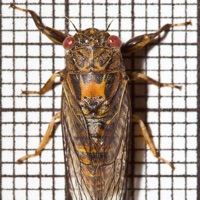
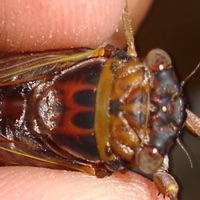
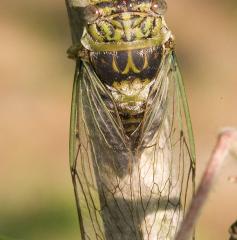
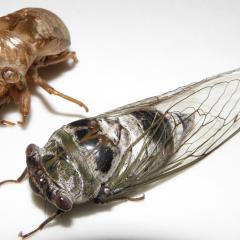
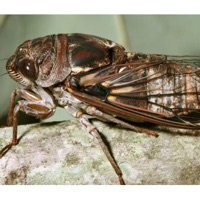
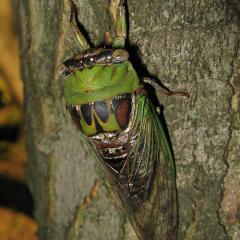
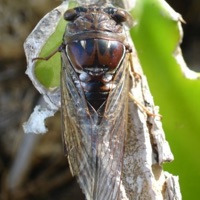

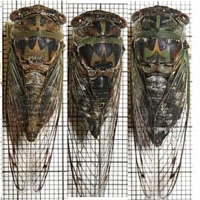
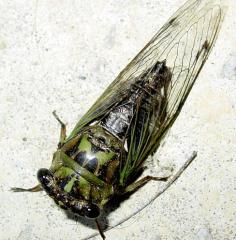
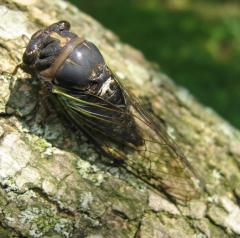
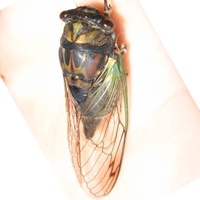
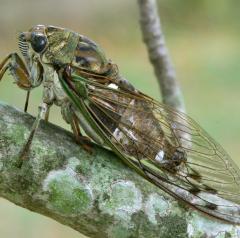
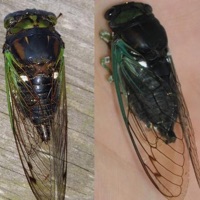
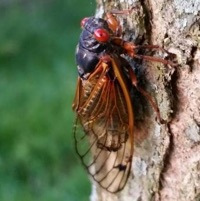
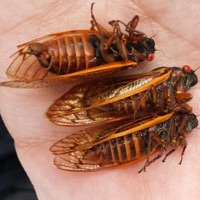
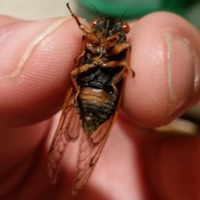
2 replies on “Common cicadas of Alabama”
Does anyone in Alabama know what is going on with our Cicadas this year? I can’t say that have heard them this loudly in my 15 years living here. Especially during the day: Any info/thoughts would be appreciated!
There are cicadas every year, to my knowledge in North Alabama. Mostly Green winged type. In 2014 there were a large population and I Fought with the Large Cicada Wasps that season, trying to take advantage of the food source for their offspring. Lots of ground holes were in my yard. My most effective weapon that year, for the Wasps, was a tennis racket. I used some ineffective Wasp sprays but I was afraid of Poisoning my dog. Racket was the best. Only lasted 3 months then the Large Wasps went elsewhere. Thank goodness only the females had a stinger. They all looked ferocious.